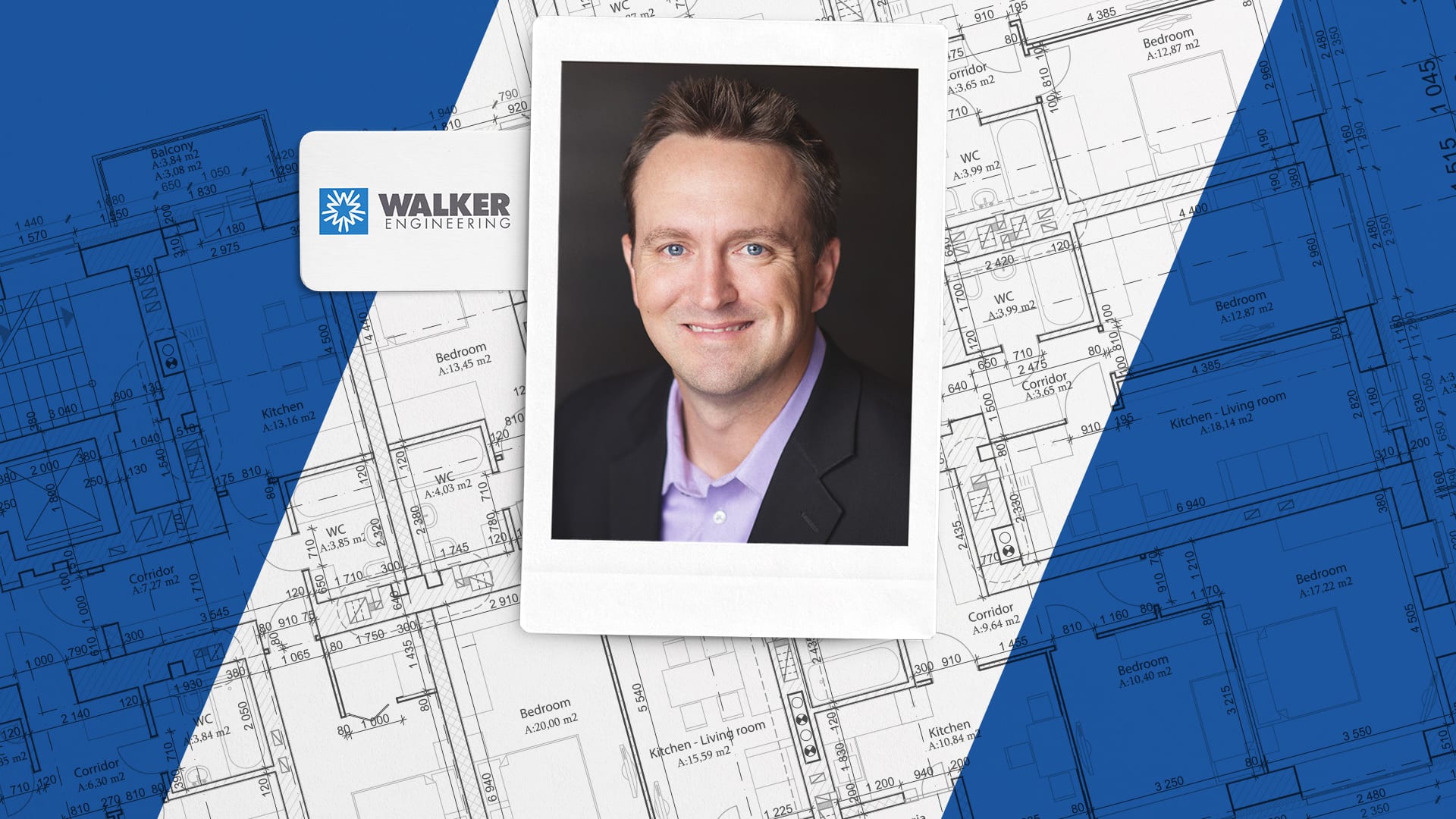Help us improve your experience. See content that is made for you!
See how IBM increased their efficiency by up to 30%!

Help us improve your experience. See content that is made for you!
See how IBM increased their efficiency by up to 30%!


Good project planning is the difference between being on time and staying on budget. And as projects become more complex, the preconstruction phase has become increasingly vital.
Getting into the preconstruction field, however, isn’t always something you plan for. At least that’s true of Justin Davis, Executive Vice President of Preconstruction, Estimating, and Business Development at Walker Engineering. A career in preconstruction brings together architecture, engineering, and construction science, all while requiring you to stay on top of the field’s constant technological evolution. Couple preconstruction’s growing importance and rapid advancements with the massive building boom in a city like Dallas-Fort Worth (DFW), where Walker is based, and you’ve got a big role on your hands.
We recently spoke with Justin about his journey to preconstruction, the undeniable success of the construction industry in DFW, and how preconstruction technology is moving the industry forward. Read on to learn more.
Walker has been a second generation family-owned business for some time now. Over the last several years, our ownership decided it was time to move the company forward. Transitioning into the Comfort Systems family has been a very seamless experience since the acquisition in 2019.
Comfort is helping us become better in terms of training, staff development, software support, and just general operational support in the background. Other benefits are that we now have access to expert companies in the industry that we didn’t cross paths with before. Today, Comfort Systems USA provides nationwide service from over 142 locations in 116 cities and has annual revenues of $2.6 billion, with almost 80% of those revenues recurring from the existing customer base. That’s a lot of horsepower to lean on in this highly competitive industry. We've learned what they want and expect, and consequently it’s made us an even better company in the process. It’s been a good relationship.
I was the first one in my family to graduate from college. I knew in high school, maybe even middle school, that I wanted to go into engineering. Originally I thought I was going to be an architect, and then I went to Kansas State, which has one of the top architectural engineering programs in the country. It was a program that was unique in the fact that it took architecture, which I had an interest in, and combined it with engineering, and solely focused on buildings.
One of my professors there left my senior year to work for a consulting firm in Dallas. So he recruited me to work for Blum Consulting Engineers, which had a long standing reputation in the DFW area.
At Blum I went the MEP consulting route, and really did everything that my degree taught me to do. I worked there for almost seven years and got exposed to a variety of project types. I had the opportunity to work on projects all over the country, and eventually decided I really wanted to get into engineering management.
When I went to PBK Architects after Blum, I was managing the MEP group there and doing primarily Higher Ed and K-12. After three years of that I really wanted to get into something more complicated, which took me to Smith Seckman Reid, one of the top healthcare MEP firms in the country, based out of Nashville. Six months after I was there, I was asked to run the Dallas office and was eventually promoted to principal-in-charge.
During my tenure with SSR, we chased a design/build project with Walker where we were their engineering partner. Scott Walker, our CEO said, "Look if you ever want to do something different, I really think you'd be really good at the preconstruction side of what we do." After a couple years of consideration, I was ready to do something different.
So after nearly 14 years in the MEP consulting field, I made a huge career change from consulting engineering to the contractor side of construction with Walker Engineering in 2015. At Walker, I started out as a precon engineer, eventually got promoted to Vice President of Preconstruction, and now, as of this past December, I'm Executive Vice President of the Precon/Estimating and Business Development for the largest electrical contractor in the state.
It's been a really fun ride and I am extremely grateful.
In DFW, there are so many different types of industries that have been drawn to this market. With no state income tax, an extremely large population of both college and technically educated folks, and plenty of land, DFW has provided a prime location for the construction boom that has occurred here over the last 20 years.
The other benefit that's made DFW so strong is the fact that several of the major design firms have been based or officed here for a long time. There's a multitude of high-end, world-famous architects in DFW, in addition to many major engineering firms.
When you look at Autodesk and BIM, a lot of that work began in DFW in the early 2000s pushed these technologies to the forefront. You weren't even hearing about it in other parts of the country. I feel like DFW has always been on the leading edge of construction because for years it has been a hot spot for building bigger, quicker, and smarter.
Well, by and large, design teams are getting less and less time to complete and fully coordinate their projects, hence the quality of the design documents has continued to decline. That has forced the specialty contractors, like Walker, to be more nimble with ability to help owners fill gaps with incomplete information versus just an estimating service.
From a technology standpoint, one of the biggest pushes that we've tried to make is getting as much information extrapolated from the engineer, the architect, and the model as we can so that we can start building our plan earlier.
One of the things that we try to do is just set up every job for success.
That means having an execution plan earlier on; what's our BIM strategy, what are we going to model, how detailed are we going to get into the model, and what are we going to build offsite? It’s about understanding how we are going to track quality at a technology level.
From a data standpoint, what we look at, more than specific pieces, are trends. Bid Board Pro is a good example. We got into Bid Board Pro because our CEO wanted to be able to see our trends with any particular customer. You can get a general trend if you go back and look at a customer and see you have 100 budgets for this company and not won one single project in five years. You can ask, “Is there somebody that we need to call, or do we just need to focus our efforts elsewhere?"
That's the type of information that we didn't really have the ability to get before. It's not that we get in and we say, "We have a 4.4% chance of winning a project with this customer," but it's more of, "We've got a great historical relationship with this team. Here's the data that shows you. Here are all the projects we've built. Here's how those projects did financially.” It just kind of helps infer our business strategy more than anything else.
Preconstruction is going to force us to plan better. The fees aren't going up and I think what you're going to see is more risk, and more responsibility pushed down to the general contractors and the subcontractors from the design side because they're not getting the time that they used to get to draw, coordinate, etc.
Our customers expect and trust us to fill in all the gaps, make sure that they've got their costs covered, and make sure that when we sit in a room, there's transparency.
They don't need just an estimating service anymore. The future of precon is a collaborative team approach, where you've got the client and their project in the middle and everybody's at the table. That's where it's headed.

May we collect and use your data?
Learn more about the Third Party Services we use and our Privacy Statement.May we collect and use your data to tailor your experience?
Explore the benefits of a customized experience by managing your privacy settings for this site or visit our Privacy Statement to learn more about your options.